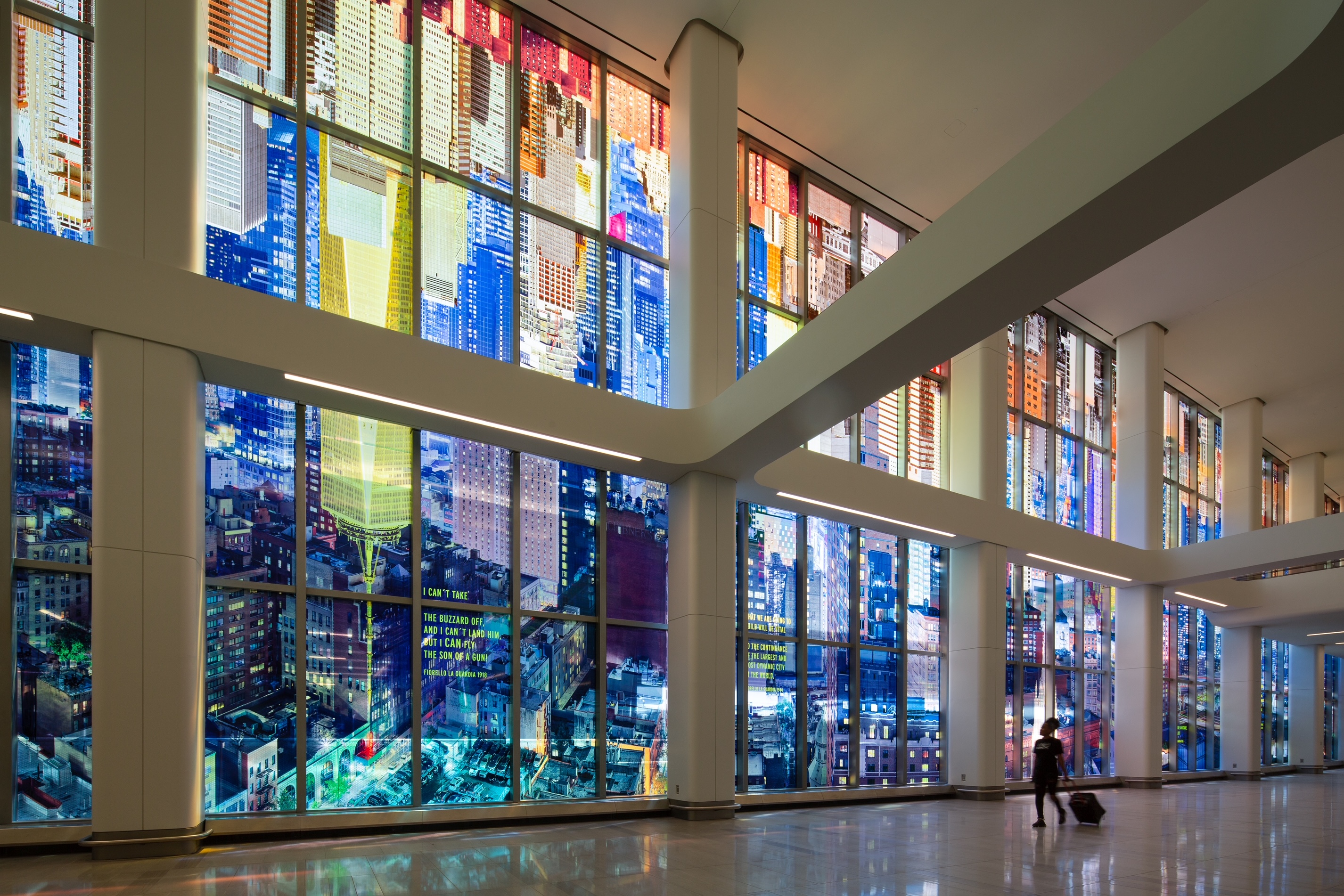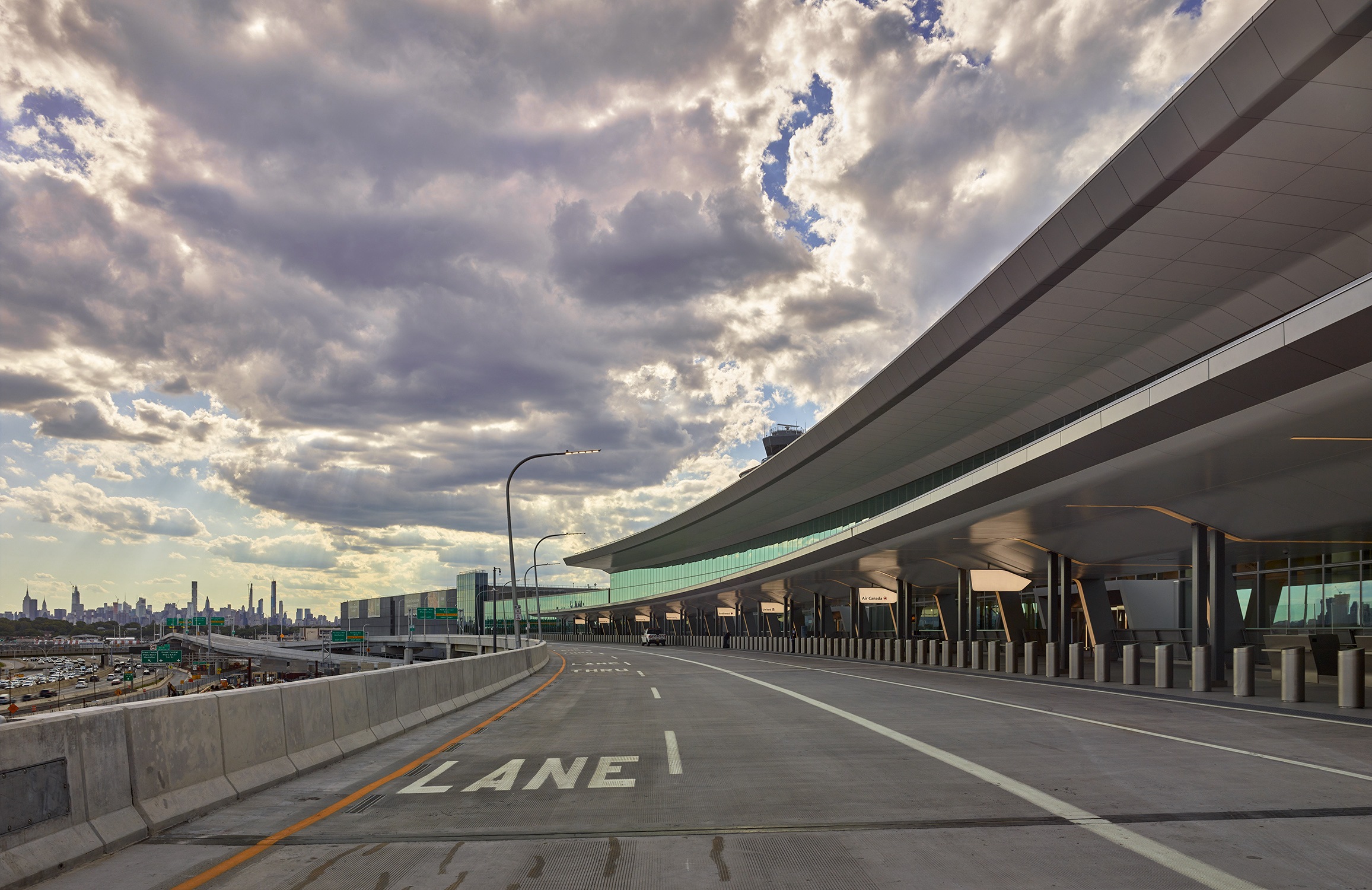The Port Authority of New York and New Jersey delivered the largest design-build project in New York and the largest design-build in American aviation history.
By: Laurie Balbo, Program Director, LaGuardia Airport Redevelopment Program
In 2016, the Port Authority entered into a $4 billion design-build agreement with developer/operator LaGuardia Gateway Partners and their design-build team of Skanska Walsh Joint Venture and HOK/WSP Joint Venture.
Following a series of focused workshops, Port Authority staff, in line with industry best practices, thoroughly reviewed project goals, risks and other constraints and determined that design-build was the optimal delivery mechanism for the new terminal. Design-build encourages innovation that streamlines delivery and incorporates best-in-class design.
Design-build allowed the agency to enter into a single design and construction contract with a fully integrated team committed to developing a world-class terminal design and delivering the project on an expedited schedule. The project team was keen to integrate design-build best practices for the project, including a two-step (RFQ and RFP) best-value procurement process that allowed for collaborative dialogue meetings with proposers, the use of alternative technical concepts and payment of a stipend.
Updating an Active Airport is a Unique Challenge
LaGuardia Gateway Partners began construction on the new Terminal B in June 2016 and completed the ambitious project on time and on budget in 2022. The Terminal B project is one of the largest design-build and public-private partnerships in American history and the largest in U.S. aviation history.
The new Terminal B replaced LaGuardia Airport’s original Central Terminal Building, which opened for air passenger traffic in 1964. Initially designed to handle a maximum capacity of eight million annual passengers (MAP), the terminal was significantly oversubscribed by 2016, when it handled 16 MAP. The old terminal, built long before modern security protocols, was also technologically obsolete.

In 2015, a comprehensive plan to construct a whole new LaGuardia Airport – which included two entirely new passenger terminals – was unveiled, with the goal of creating a world-class, 21st-century passenger experience featuring modern customer amenities from curb to gate, state-of-the-art architecture and more spacious gate areas. The $8 billion project, two-thirds of which was funded through private financing and existing passenger fees, included the replacement of terminals B and C, construction of a new 3,200-space parking garage, utility relocations and an entirely new airport roadway network. Construction of the new Terminal B broke ground in 2016.
Building a new airport while maintaining full flight operations was a daunting task. The terminal was activated in carefully choreographed phases designed to minimize customer inconvenience, adverse impacts on the surrounding communities and disruption of airport operations. The complexity of creating the new Terminal B required building next to, behind and even over the top of the original terminal, which remained fully operational during construction. In addition, more than 30 road shifts were implemented, and 20 bridges were constructed to accommodate the end-state road network transition.
Anatomy of an Airport Terminal
As one of Terminal B’s most distinct architectural elements, a pair of skybridges spans active aircraft taxi lanes, connecting the new, light-filled arrivals and departures hall to the terminal’s two island concourses, all featuring best-in-class concessions and amenities for passengers. LaGuardia is the only airport in the nation to feature dual skybridges.
Measuring 482 feet long and 60 feet above the ground, the skybridges are a critical design feature. Architecturally impressive, they also allowed more than two additional miles of taxiway space to be built, reducing delays for arrivals and departures and easing customers’ ability to travel seamlessly to their gates. Creating an additional usable airfield resulted in a key improvement to airfield operations on the tiny 680-acre airport footprint.
Passengers using the new skybridges to reach their gates enjoy magnificent views of the Manhattan skyline and the surrounding bays.

The program also included extensive landside construction work, including a new seven-story parking garage with covered, convenient pickup facilities for taxis and ride-sharing vehicles. Work included a substation expansion, related roadway improvements and supporting infrastructure – all built while keeping the terminal fully functional during construction.
The 33-gate, common-use domestic Terminal B is an open, modern facility that vastly improves the passenger experience by greatly enhancing efficiency. Its flexible design allows for growth and adaptation to increasing demands and the evolving requirements of air travel. The daylight-filled interior features unique and impressive public art installations. The project earned a LEED Gold certification, the first airport terminal to be certified under LEED v4.
Award-Winning Results
In December 2021, Terminal B was awarded UNESCO’s Prix Versailles as the best new airport in the world. And, in March 2023, Skytrax awarded the New Terminal B its top five-star rating, additionally calling it the best new airline terminal of the year. The LGA terminal ranking is Skytrax’s first five-star rating for any U.S. airport facility.
